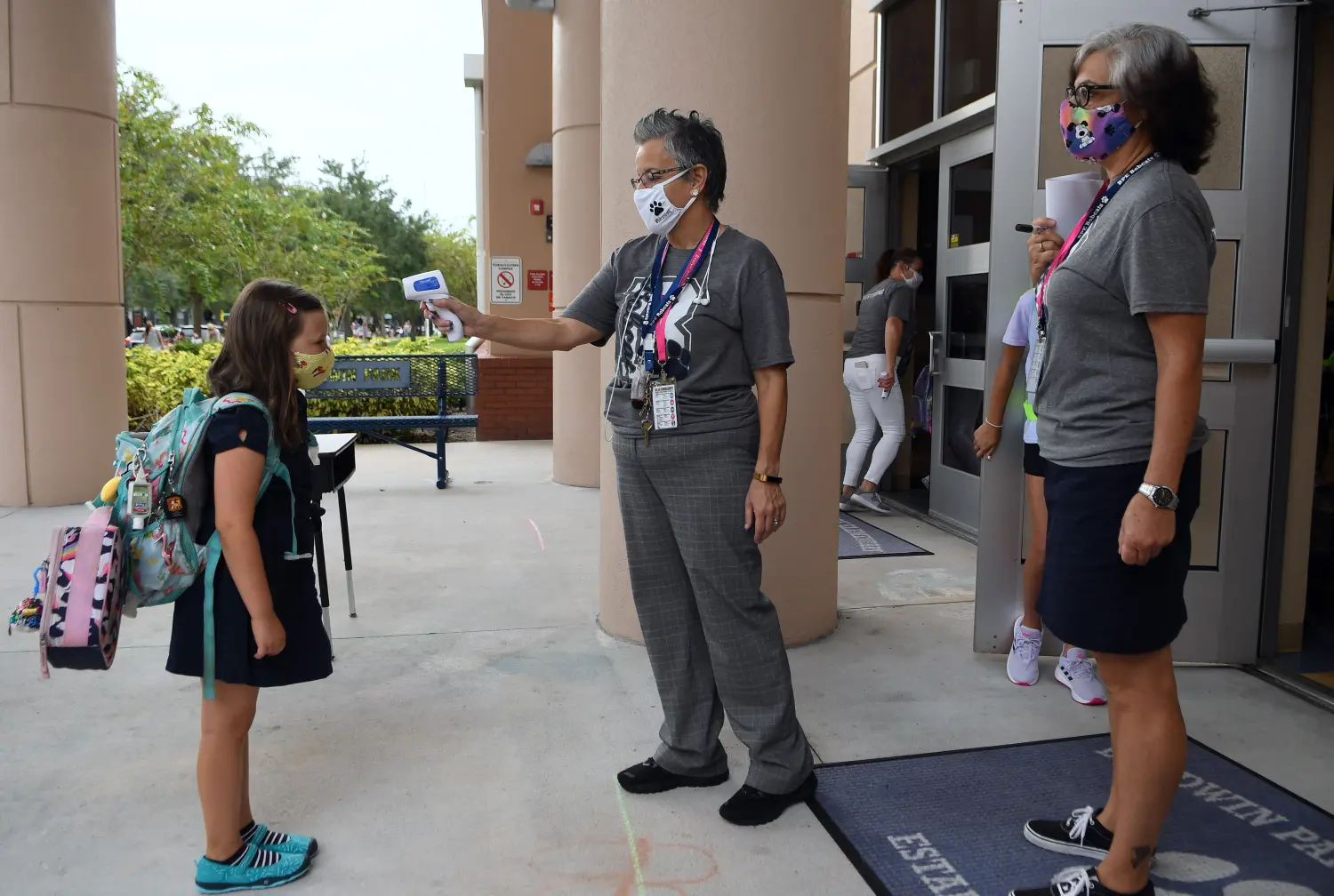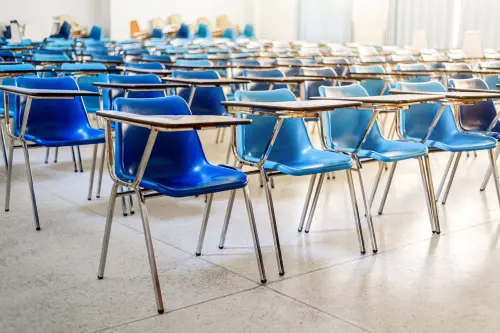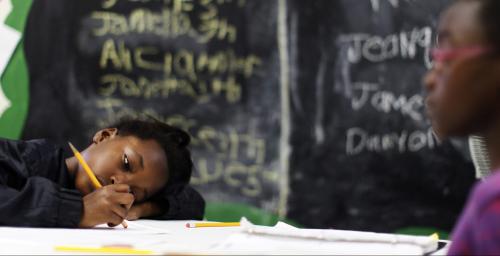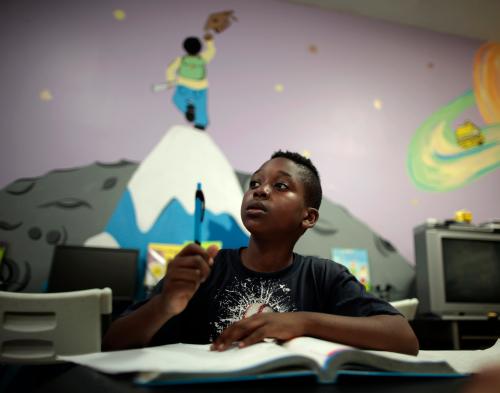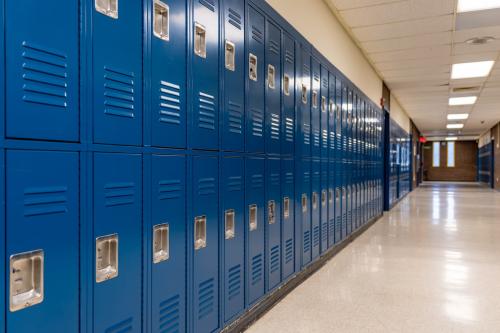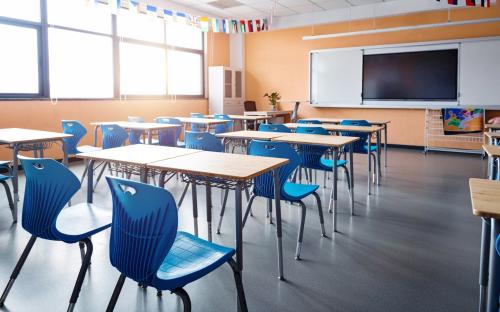The pandemic was a wrecking ball for U.S. public education, bringing months of school closures, frantic moves to remote instruction, and trauma and isolation.
Kids may be back at school after three disrupted years, but a return to classrooms has not brought a return to normal. Recent results from the National Assessment of Educational Progress (NAEP) showed historic declines in American students’ knowledge and skills and widening gaps between the highest- and lowest-scoring students.
But even these sobering results do not tell us the whole story.
After nearly three years of tracking pandemic response by U.S. school systems and synthesizing knowledge about the impacts on students, we sought to establish a baseline understanding of the contours of the crisis: What happened and why, and where do we go from here?
This first annual “State of the American Student” report synthesizes nearly three years of research on the academic, mental health, and other impacts of the pandemic and school closures.
It outlines the contours of the crisis American students have faced during the COVID-19 pandemic and begins to chart a path to recovery and reinvention for all students—which includes building a new and better approach to public education that ensures an educational crisis of this magnitude cannot happen again.
The state of American students as we emerge from the pandemic is still coming into focus, but here’s what we’ve learned (and haven’t yet learned) about where COVID-19 left us:
1. Students lost critical opportunities to learn and thrive.
• The typical American student lost several months’ worth of learning in language arts and more in mathematics.
• Students suffered crushing increases in anxiety and depression. More than one in 360 U.S. children lost a parent or caregiver to COVID-19.
• Students poorly served before the pandemic were profoundly left behind during it, including many with disabilities whose parents reported they were cut off from essential school and life services.
This deeply traumatic period threatens to reverberate for decades. The academic, social, and mental-health needs are real, they are measurable, and they must be addressed quickly to avoid long-term consequences to individual students, the future workforce, and society.
2. The average effects from COVID mask dire inequities and widely varied impact.
Some students are catching up, but time is running out for others. Every student experienced the pandemic differently, and there is tremendous variation from student to student, with certain populations—namely, Black, Hispanic, and low-income students, as well as other vulnerable populations—suffering the most severe impacts.
The effects were more severe where campuses stayed closed longer. American students are experiencing a K-shaped recovery, in which gaps between the highest- and lowest-scoring students, already growing before the pandemic, are widening into chasms. In the latest NAEP results released in September, national average scores fell five times as much in reading, and four times as much in math, for the lowest-scoring 10 percent of nine-year-olds as they had for the highest-scoring 10 percent.
At the pace of recovery we are seeing today, too many students of all races and income levels will graduate in the coming years without the skills and knowledge needed for college and careers.
3. What we know at this point is incomplete. The situation could be significantly worse than the early data suggest.
The data and stories we have to date are enough to warrant immediate action, but there are serious holes in our understanding of how the pandemic has affected various groups of students, especially those who are typically most likely to fall through the cracks in the American education system.
We know little about students with complex needs, such as those with disabilities and English learners. We still know too little about the learning impacts in non-tested subjects, such as science, civics, and foreign languages. And while psychologists, educators, and the federal government are sounding alarms about a youth mental health crisis, systematic measures of student wellbeing remain hard to come by.
We must acknowledge that what we know at this point is incomplete, since the pandemic closures and following recovery have been so unprecedented in recent times. It’s possible that as we continue to dig into the evidence on the pandemic’s impacts, some student groups or subjects may have not been so adversely affected. Alternatively, the situation could be significantly worse than the early data suggest. Some students are already bouncing back quickly. But for others, the impact could grow worse over time.
In subjects like math, where learning is cumulative, pandemic-related gaps in students’ learning that emerged during the pandemic could affect their ability to grasp future material. In some states, test scores fell dramatically for high schoolers nearing graduation. Shifts in these students’ academic trajectories could affect their college plans—and the rest of their lives. And elevated rates of chronic absenteeism suggest some students who disconnected from school during the pandemic have struggled to reconnect since.
4. The harms students experienced can be traced to a rigid and inequitable system that put adults, not students, first.
• Despite often heroic efforts by caring adults, students and families were cut off from essential support, offered radically diminished learning opportunities, and left to their own devices to support learning.
• Too often, partisan politics, not student needs, drove decision-making.
• Students with complexities and differences too often faced systems immobilized by fear and a commitment to sameness rather than prioritization and problem-solving.
So, what can we do to address the situation we’re in?
Diverse needs demand diverse solutions that are informed by pandemic experiences
Freed from the routines of rigid systems, some parents, communities, and educators found new ways to tailor learning experiences around students’ needs. They discovered learning can happen any time and anywhere. They discovered enriching activities outside class and troves of untapped adult talent.
Some of these breakthroughs happened in public schools—like virtual IEP meetings that leveled power dynamics between administrators and parents advocating for their children’s special education services. Others happened in learning pods or other new environments where families and community groups devised new ways to meet students’ needs. These were exceptions to an otherwise miserable rule, and they can inform the work ahead.
We must act quickly but we must also act differently. Important next steps include:
• Districts and states should immediately use their federal dollars to address the emergent needs of the COVID-19 generation of students via proven interventions, such as well-designed tutoring, extended learning time, credit recovery, additional mental health support, college and career guidance, and mentoring. The challenges ahead are too daunting for schools to shoulder alone. Partnerships and funding for families and community-driven solutions will be critical.
• By the end of the 2022–2023 academic year, states and districts must commit to an honest accounting of rebuilding efforts by defining, adopting, and reporting on their progress toward 5- and 10-year goals for long-term student recovery. States should invest in rigorous studies that document, analyze, and improve their approaches.
• Education leaders and researchers must adopt a national research and development agenda for school reinvention over the next five years. This effort must be anchored in the reality that the needs of students are so varied, so profound, and so multifaceted that a one-size-fits-all approach to education can’t possibly meet them all. Across the country, community organizations who previously operated summer or afterschool programs stepped up to support students during the school day. As they focus on recovery, school system leaders should look to these helpers not as peripheral players in education, but as critical contributors who can provide teaching, tutoring, or joyful learning environments for students and often have trusting relationships with their families.
• Recovery and rebuilding should ensure the system is more resilient and prepared for future crises. That means more thoughtful integration of online learning and stronger partnerships with organizations that support learning outside school walls. Every school system in America should have a plan to keep students safe and learning even when they can’t physically come to school, be equipped to deliver high-quality, individualized pathways for students, and build on practices that show promise.
Our “State of the American Student” report is the first in a series of annual reports the Center on Reinventing Public Education intends to produce through fall of 2027. We hope every state and community will produce similar, annual accounts and begin to define ambitious goals for recovery. The implications of these deeply traumatic years will reverberate for decades unless we find a path not only to normalcy but also to restitution for this generation and future generations of American students.
The road to recovery can lead somewhere new. In five years, we hope to report that out of the ashes of the pandemic, American public education emerged transformed: more flexible and resilient, more individualized and equitable, and—most of all— more joyful.
The Brookings Institution is committed to quality, independence, and impact.
We are supported by a diverse array of funders. In line with our values and policies, each Brookings publication represents the sole views of its author(s).


